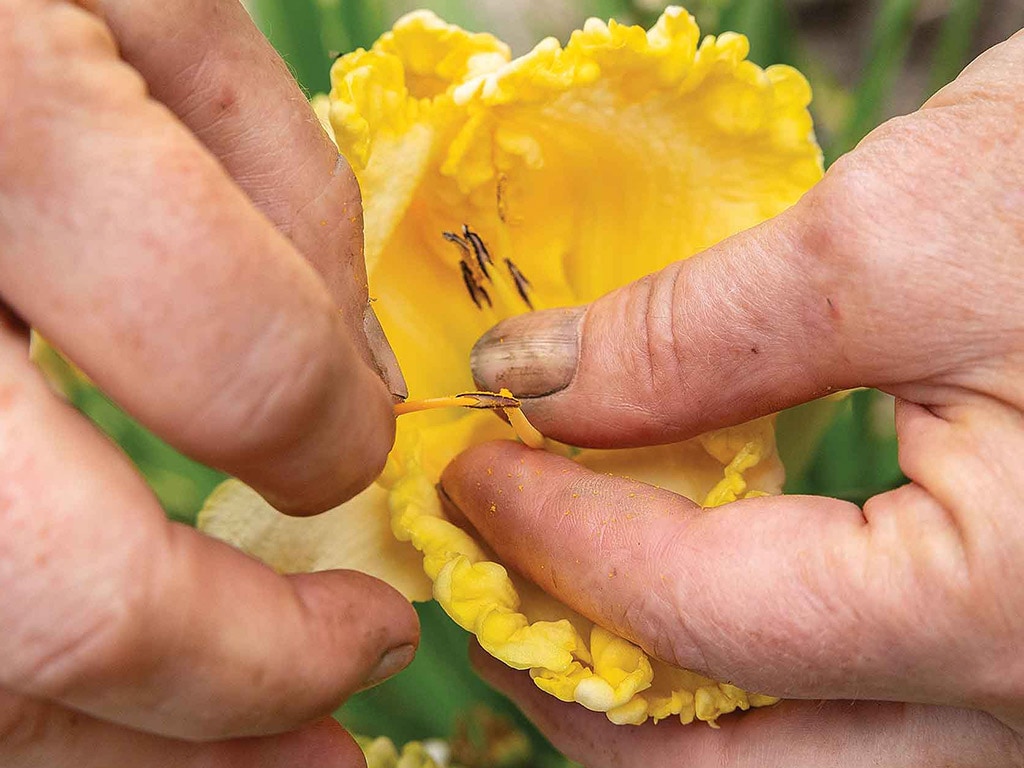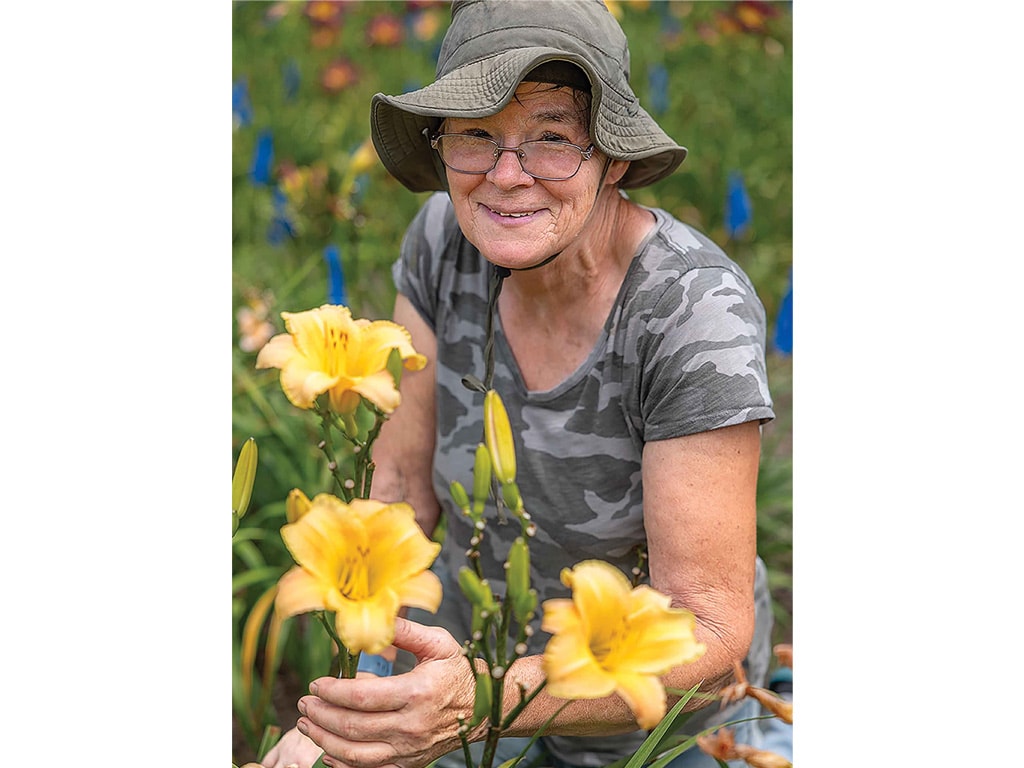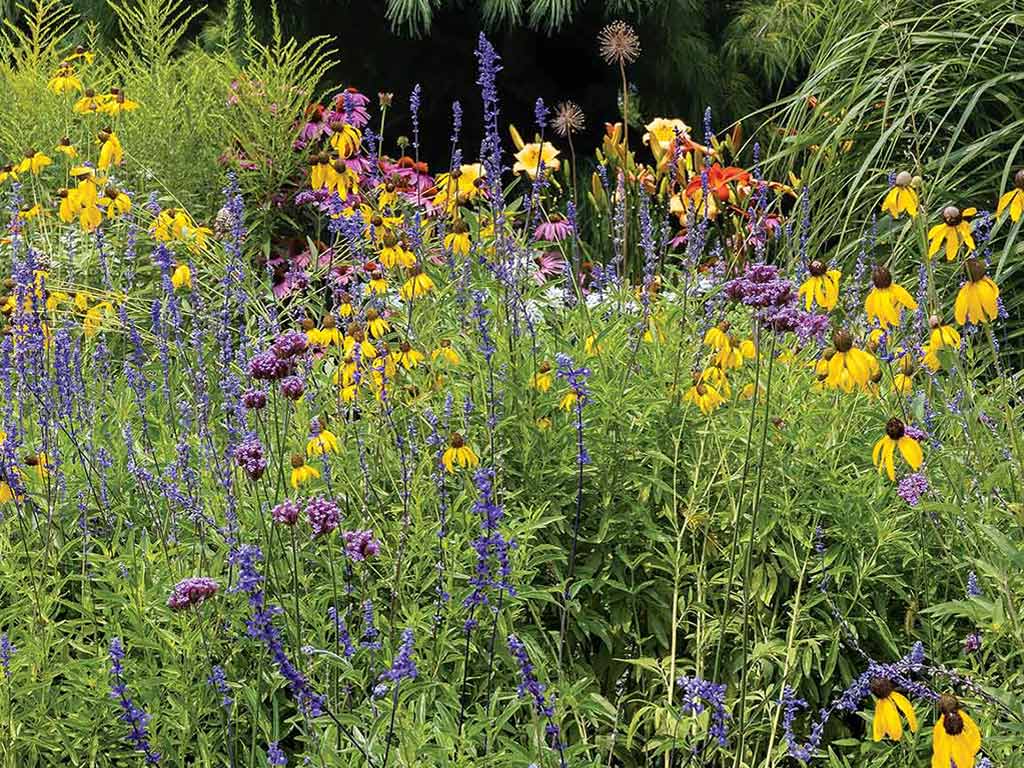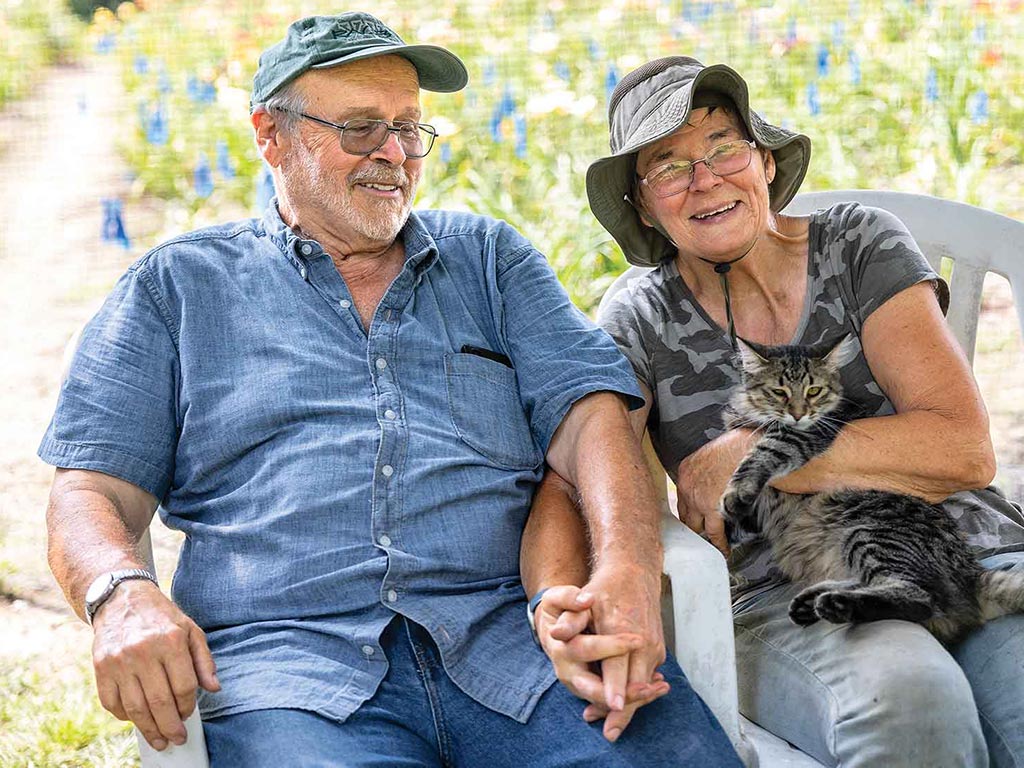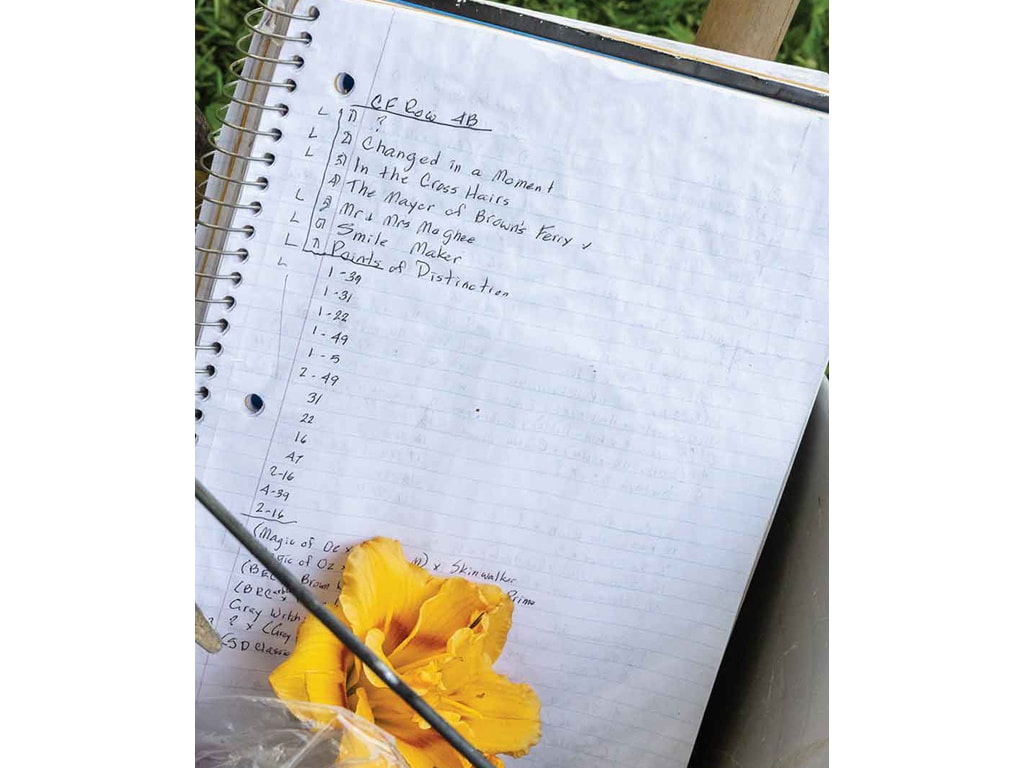Specialty/Niche June 01, 2025
Color in Numbers
This Iowa couple delights in daylily propagation.
by Bill Spiegel
Along Rogers Road in central Cedar Rapids, Iowa, one property features an eye-popping kaleidoscope of color, texture, balance, and rhythm.
This is the home of Kramer Flower Farm, where Sue and Dave Kramer have spent nearly four decades designing, tweaking, and growing beautiful things.
Perennial flowers—daylilies specifically—are the Kramers' specialty.
"Sue has always been one to want to create beauty," says Dave, who adds that early in their marriage, she happily designed gardens for other people. "It was always about making beautiful gardens for others to enjoy."
The Kramers raise, breed, and sell daylilies. But they've had past horticulture-based businesses including owning an apple orchard, raising more than 500 types of perennial plants, and selling hostas, herbs, and daylilies.
Their passion for plants is long-standing. Sue and Dave each earned landscape architecture degrees from Iowa State University and spent parts of their professional careers working in that capacity. While in St. Louis, Missouri, they wanted to return to Iowa and a smaller community.
Above. Creating a hybrid is as easy as crossing one flower's pollen to another's stamen. Sue Kramer says daylilies come in a variety of colors and textures. As a horticulture instructor at Kirkwood Community College in Cedar Rapids years ago, Sue developed a perennial garden as a learning laboratory for her students. Dave and Sue Kramer with one of their rescue cats at Kramer Flower Farm in Cedar Rapids, Iowa. The Kramers specialize in daylily breeding, such as "Czech Peach Kolaches," which Sue introduced and registered in 2023.
All kinds of plants. The city of Cedar Rapids had an opening for a city landscape architect, and both Kramers applied. Dave got the job, and Sue began teaching in the horticulture department at nearby Kirkwood Community College. They moved to this property in part because of its 1,000-tree apple orchard and for years the Kramers pruned, weeded, picked, and sorted—selling apples at farmers' markets.
"We thought it would be fun. Well, it sure as hell wasn't," Dave says. "It was harder work than baling hay on the farm."
Eventually, the Kramers tore out the apple orchards, focusing on perennial plants and flowers. The landscape on the property also served as a living laboratory for Sue's students.
"When I had been working at Kirkwood, we were supposed to be teaching perennials and I couldn't find any good perennial gardens," Sue says. "I began putting them in beds in the front yard to have something to teach from."
With the lack of perennial plant availability in most retail outlets, the Kramers sensed a potential business opportunity.
They erected two 100- by 40-foot greenhouses, growing nearly 60,000 plants per year from 500 types of perennials from seeds, cuttings, and plugs. For nearly 20 years, they sold thousands of plants to farm visitors.
"We had the biggest selection in eastern Iowa," Sue says.
They began to focus exclusively on daylilies after their two grown daughters left home.
Sue began hybridizing them in 2009. She has since cross-pollinated hundreds—if not thousands—of daylilies.
Breeders remove pollen from the stamens of one flower and place it on the pistil of another flower. Seeds from the cross will be ready about 50 days later; breeders harvest them, let them vernalize in a cool environment for about six weeks, and then plant them.
Daylilies are either diploids (two sets of chromosomes per cell) or tetraploids (four sets of chromosomes per cell). Tetraploids typically grow faster; they are bigger and sturdier. But, you cannot cross the two.
"You have to cross a tet with a tet and a dip with a dip," she explains. "If you try putting a tet on a dip you get zip," she says.
The flowers are easy to cross-pollinate but it takes as many as five years to see consistent results and eight to 10 years before a hybrid could be introduced to the public, she adds: "This is not for people who want instant results."
Sue has 10 hybrids registered with the American Daylily Society, including flowers that honor loved ones. Sonnet for Sonia is a yellow peach blend, Prayers for David is white, with a scissors curl-type of leaf petal. For Those Left Behind is a brilliant red orange.
Taking careful, copious notes in a notebook and using a ballpoint pen, Sue tracks daily activity of each cross she makes during the summer growing season.
Dave works alongside her, and the couple's two Maine Coon rescue cats dart in and out of clumps of flowers.
Sue treasures each day of the growing season.
"When you have new seedlings set out, it's really fun to get up in the morning and come out and see when it blooms for the first time," she says. "Nobody else has ever seen that flower before."
Centuries of flowers. Daylilies take on a variety of different shapes and have a host of different petal features. It's not surprising, given the genus Hemerocallis has been around for more than 2,000 years. They can bloom from May to October in a variety of colors from solid to multiple hues. The species range in height from 15- to 60-inches tall.
Folks who buy Kramer daylilies visit the farm and dig a clump of roots to transplant into their own gardens. The flower's durability, adaptability, and ease of maintenance appeal to gardeners.
The Kramers suggest customers choose varieties that have a good "scape," or the stalk that produces the flowers. More scapes, or stalks, indicates the plant will bloom longer. Since each bloom only lasts a day, a plant with more scapes will feature blooms for a longer time. Some daylilies are repeat bloomers, creating flowers for multiple months in the summer.
Each daylily has a purpose, the Kramers agree: delivering joy to others. It's something unique to gardening, Sue says.
"I've just always had a really strong connection to the earth. To me, it's important for people to connect to the earth and people are losing that connection." ‡
Read More
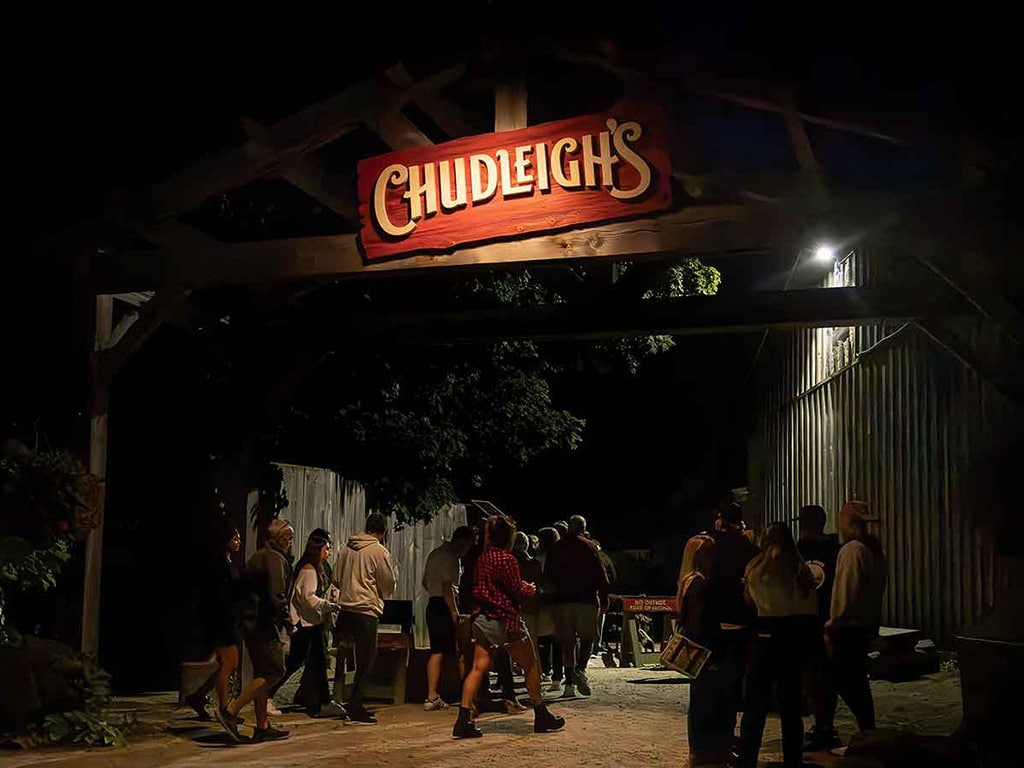
SPECIALTY/NICHE
Sound of Music
Hosting a concert series draws new visitors to orchard.


